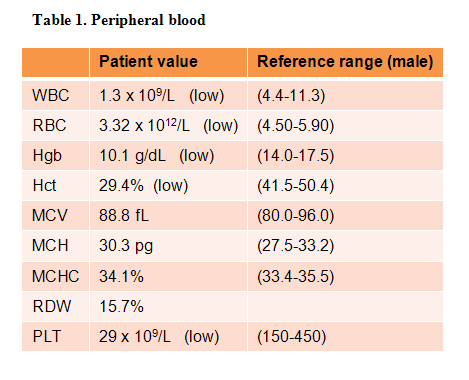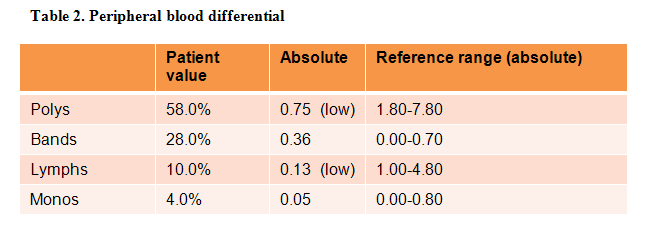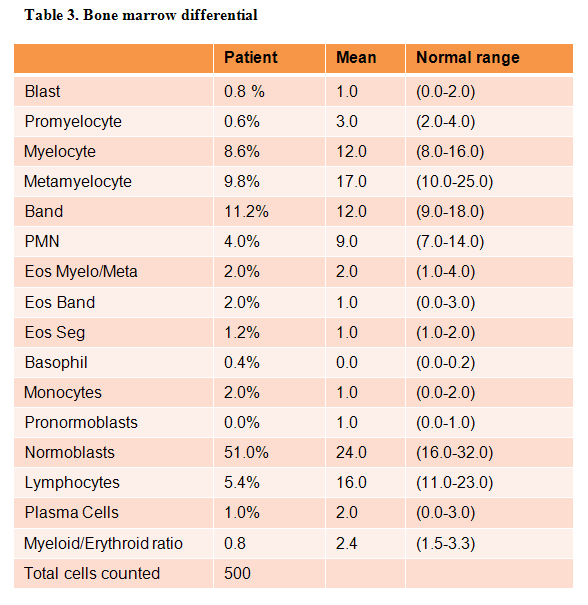
![]() Contributed by Rebecca Leeman-Neill, MD, PhD and Christine Garcia Roth, MD
Contributed by Rebecca Leeman-Neill, MD, PhD and Christine Garcia Roth, MD
CLINICALHISTORY
A 52-year-old man was admitted with dyspnea and found to have pneumonia. He was treated and discharged but continued to be dyspneic, with new symptoms of fever, night sweats, and weight loss, leading to readmission one month later.
The patient's past medical history is significant for gout and osteoarthritis. He lives on a farm in West Virginia and works for an asbestos and insulation removal company. His wife enjoys hunting birds and they occasionally see bats in their barn. The patient has a family history of diabetes mellitus and coronary artery disease.
Peripheral blood:
The patient was found to have the following CBC and differential (Tables 1 and 2) showing pancytopenia:


Bone marrow:
Differential of the bone marrow aspirate (Table 3) shows the following (erythroid predominance):

The patient's bone marrow biopsy is hypercellular for age (approximately 80% cellular) (Figure 1) with trilineage hematopoiesis, erythroid hyperplasia, and increased megakaryocytes with rare hypolobated forms. Multiple granulomas are present (Figures 2 and 3).
The bone marrow aspirate smears show rare dyserythropoietic forms (Figure 4) as well as small, round to oval forms with peripheral clearing (Figures 5 and 6).
A Grocott stain highlights individual and clustered round fungal forms, especially within granulomas (Figures 7 and 8).
Flow cytometric and cytogenetic studies performed at the outside hospital were negative for any immunophenotypic or chromosomal abnormality.
Further laboratory studies:
The patient was found to have positive urine and serum histoplasma antigen and was found to be HIV negative.